If you love spice, crunch and a little sweetness then you'll be in heaven with these sweet potato pakoras.

Pakoras are an Indian snack food that you're probably already familiar with and tend to come in two main forms.
Either the featured ingredient is
- cut into chunks or slices, then battered and fried, as in this sweet potato pakora recipe, or
- grated/shredded and combined with the batter before frying (as in my cabbage pakoras recipe).
Both approaches are delicious and neither is more correct than the other, although certain ingredients will be more traditionally cooked one way over the other.
If you're not too worried about being 100% authentic, the decision as to which way to make your pakora will usually depend on how the vegetable behaves (eg will it grate, is it very wet) and whether it will cook through adequately if cooked as a slice/chunk.
For all my pakora, I use a batter that is made primarily from garam flour, also known as besan. Gram flour is the traditional flour used for pakora and is made by finely grinding dried chickpeas (also known as garbanzo beans). You could use wheat flour, but you wouldn't get quite the same result. Gram flour also has the benefit of being naturally gluten free.
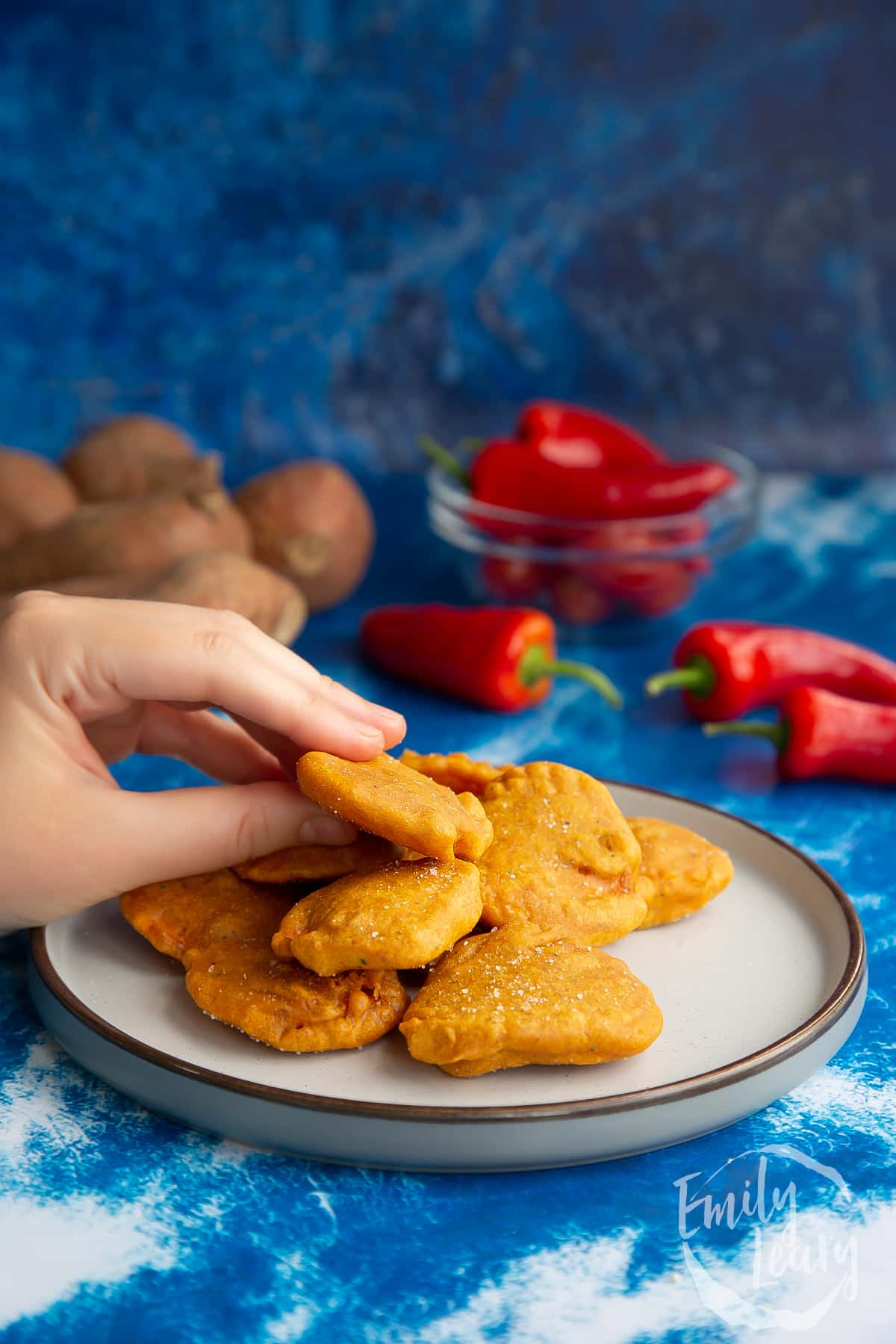
For my batter, I also use a little rice flour. This isn't called for in every traditional pakora recipe, but I find it helps with the behaviour of the batter and how it adheres, as well as the lightness of the final product.
For flavouring the batter, there is variation again. Your choices might depend on what you feel best complements the key ingredients. I flavour my batter with chilli, coriander and cumin - enough to add flavour without overpowering the hero ingredient.
Making the pakora simply involves combining the dry ingredients and that adding water to give a thick batter, then adding the veggies, coating and deep frying. I find it a really enjoyable process and love to put the radio on as I fry up a batch to enjoy together as a family.
Here's my recipe for sweet potato pakora.
Ingredients
- 125 g (4.4 oz) chickpea flour
- 25 g (0.9 oz) rice flour
- 1/2 tsp (0.5 tsp) salt
- 1/4 tsp (0.3 tsp) freshly ground black pepper
- 1/2 tsp (0.5 tsp) chili powder
- 1/4 tsp (0.3 tsp) ground coriander
- 1/2 tsp (0.5 tsp) turmeric powder
- 1/2 tsp (0.5 tsp) cumin
- 1/2 red chili finely chopped
- 2 medium sweet potatoes peeled and cut into 1-1.5cm (½ inch) slices
- vegetable oil to fry
Equipment
- Deep fat fryer or suitable high-sided saucepan
Instructions
Put the chickpea flour, rice flour, salt, coriander, chilli powder, turmeric, cumin and fresh chilli in a large mixing bowl.

Whisk together.
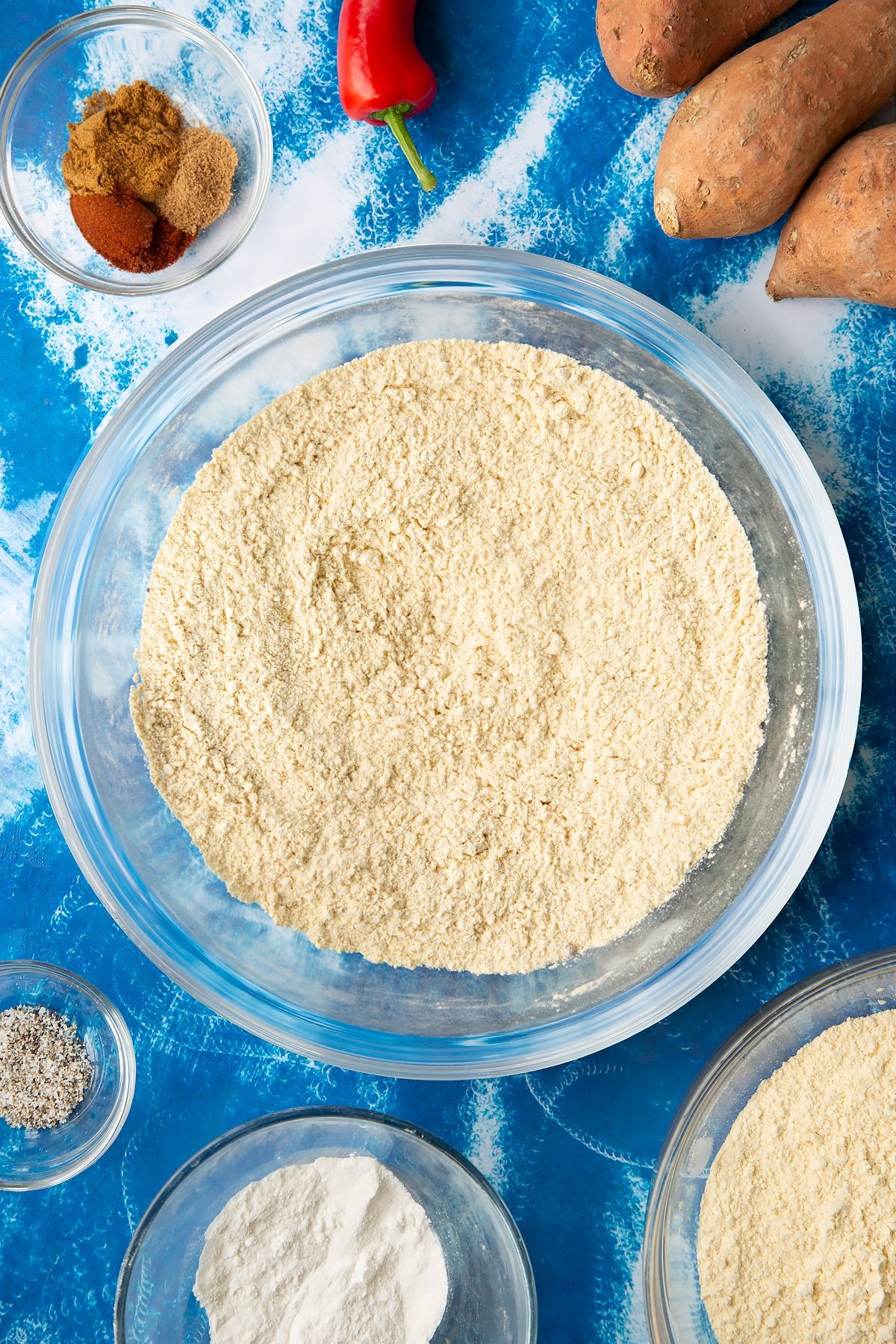
Measure 175ml (3/4 US cups) of water a little at a time, whisking until you have a thick, pancake-like batter - you might not need all of the water.
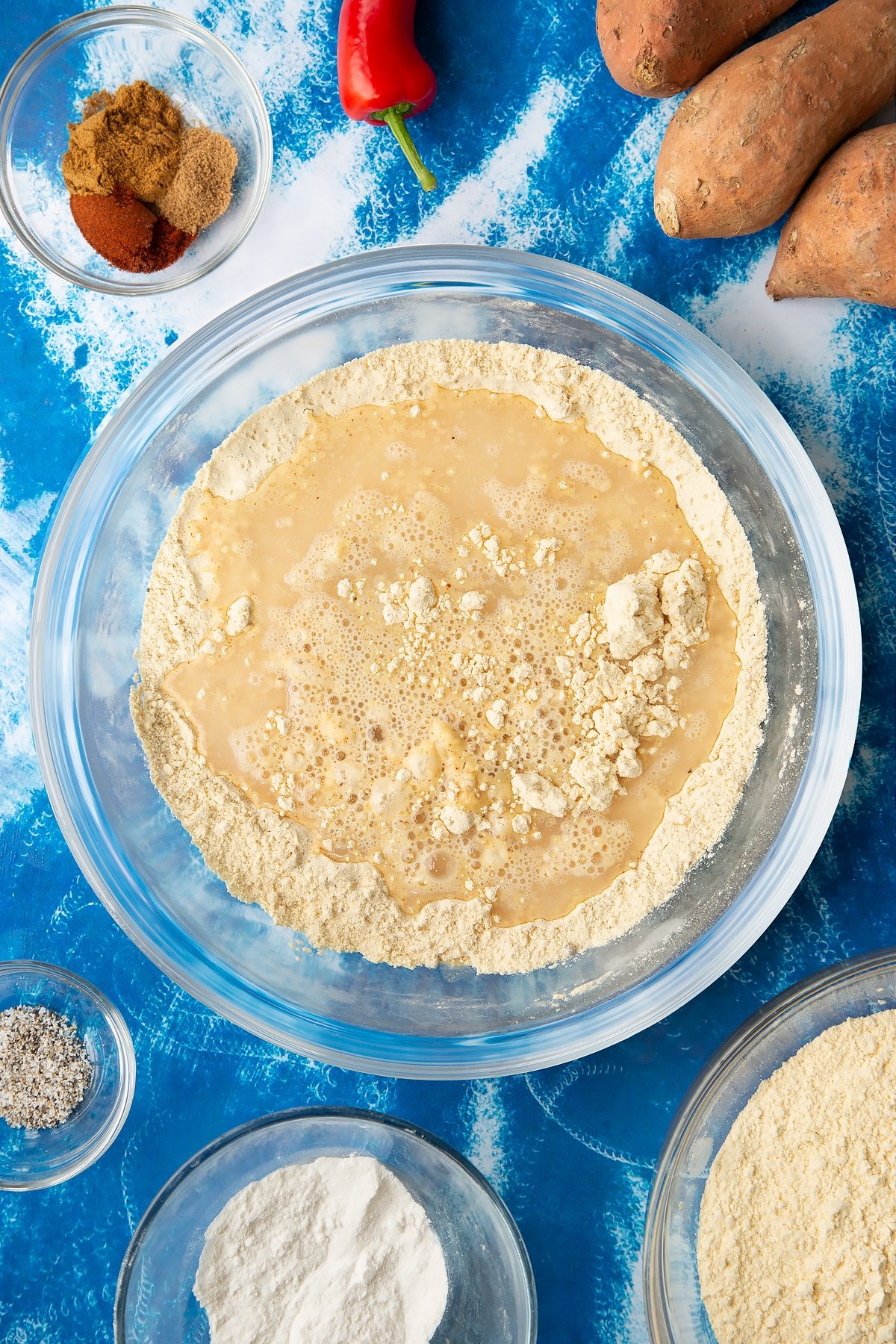
Leave to rest for 10 minutes.
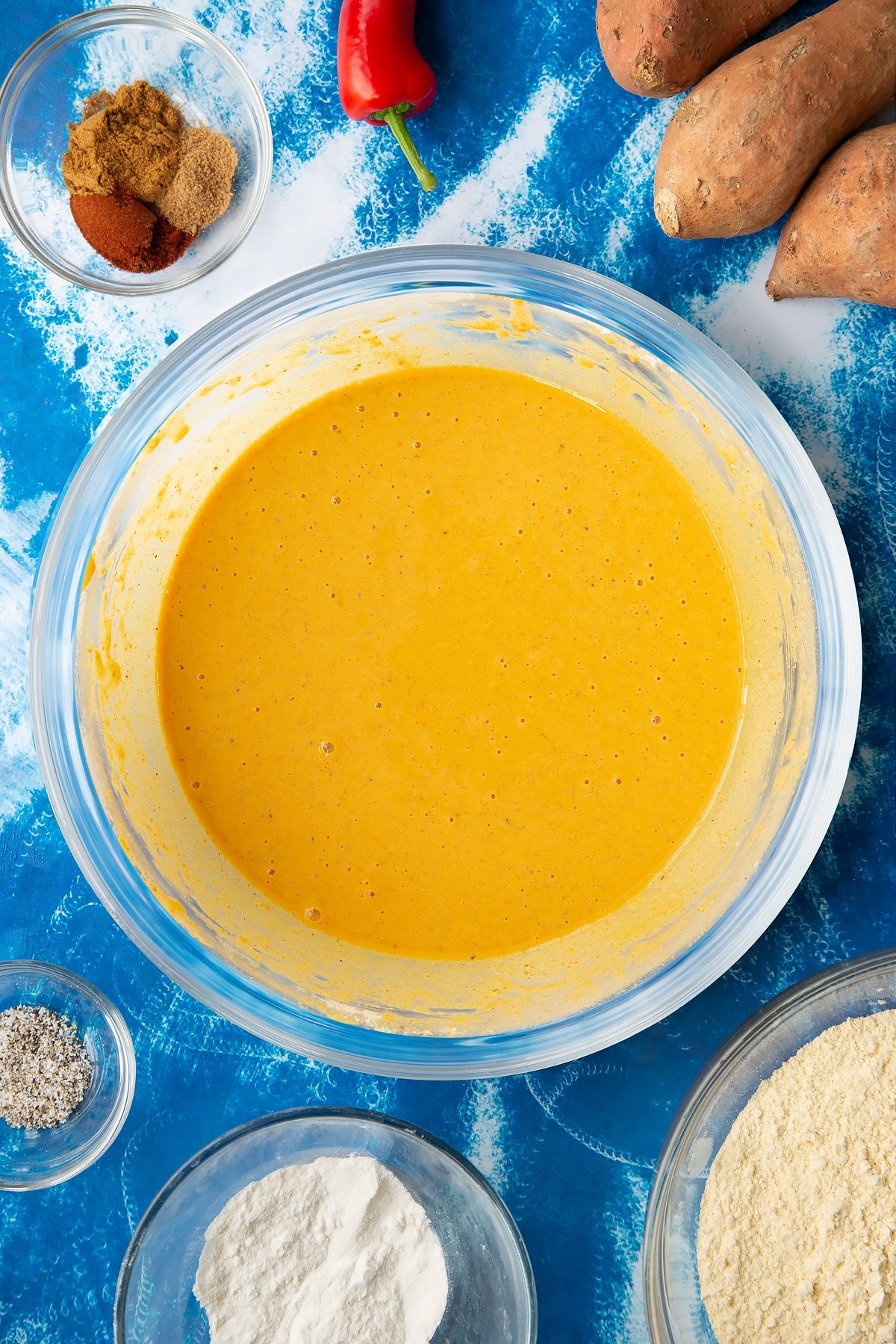
Prepare the oil in your deep fat fryer or a large, high-sided saucepan. It’s no more than one third full to allow for safe expansion during heating and cooking.
Heat the oil to 180C (355F) or until a little bit of batter dropped into the oil bubbles.
Put a few pieces of sweet potato into the batter and turn so that they are well coated.
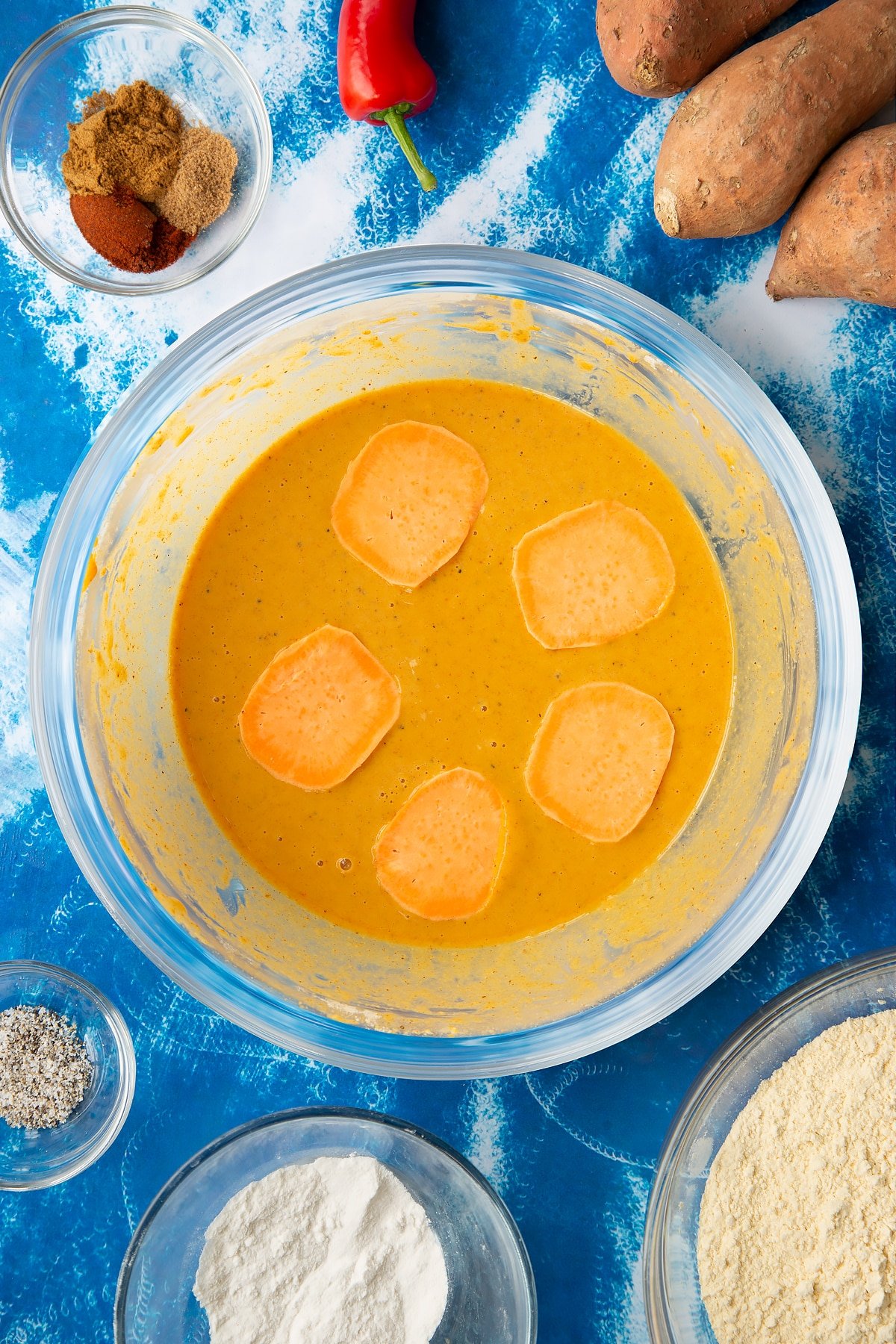
Don’t dip all of them at once as you’ll overcrowd the pan.

Aim for 4-6 pieces at a time.
Lower the coated pieces into the oil slowly so that they don’t drop straight to the bottom and stick.
Fry for 6 minutes until crisp and golden, turning gently as needed.
Lift from the pan using a slotted spoon or straining spoon and place on a plate lined with kitchen paper to allow the oil to drain.
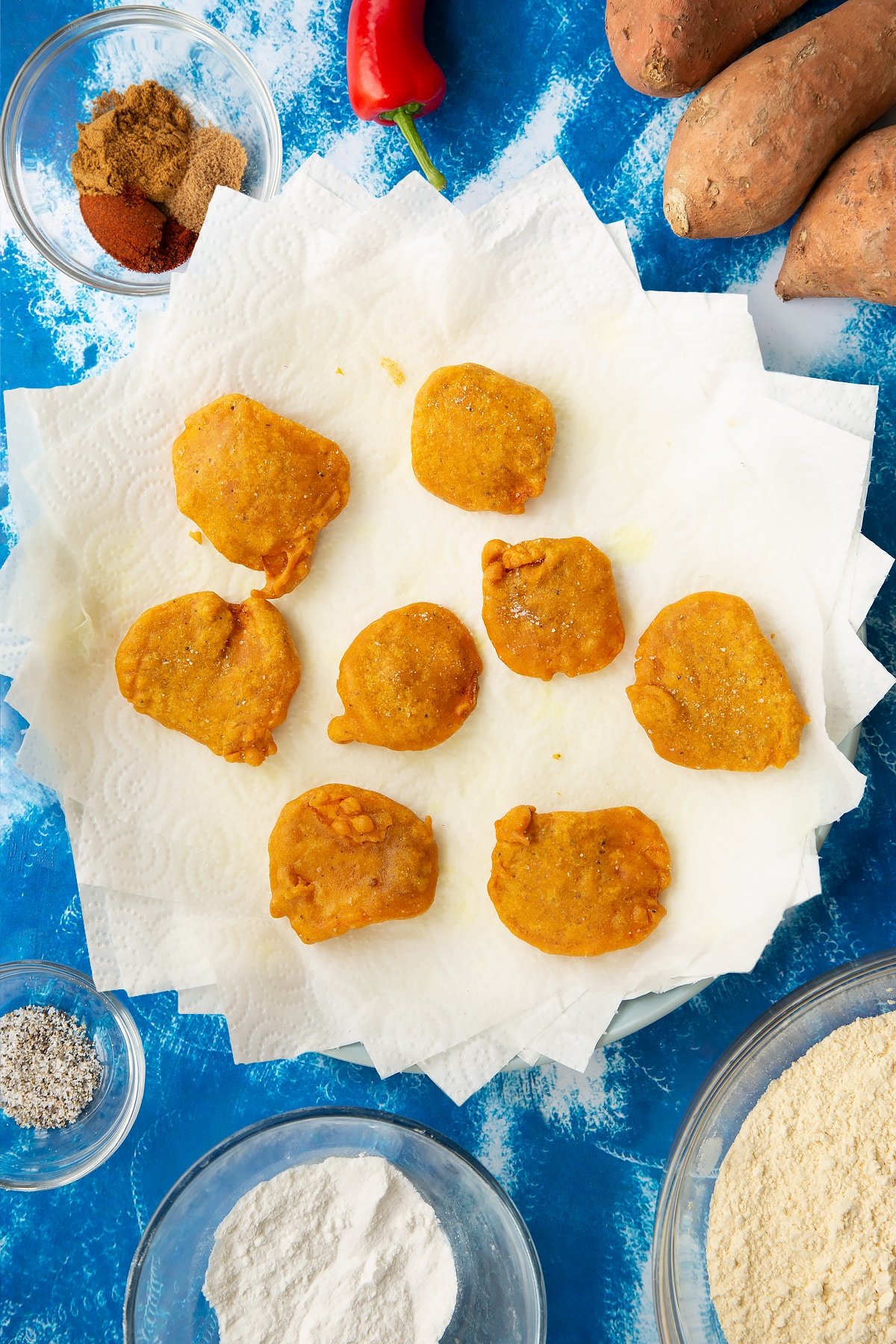
If you like, you can place the drained pakora on a baking sheet in a low oven to stay hot and crisp while you fry the rest of the batch.
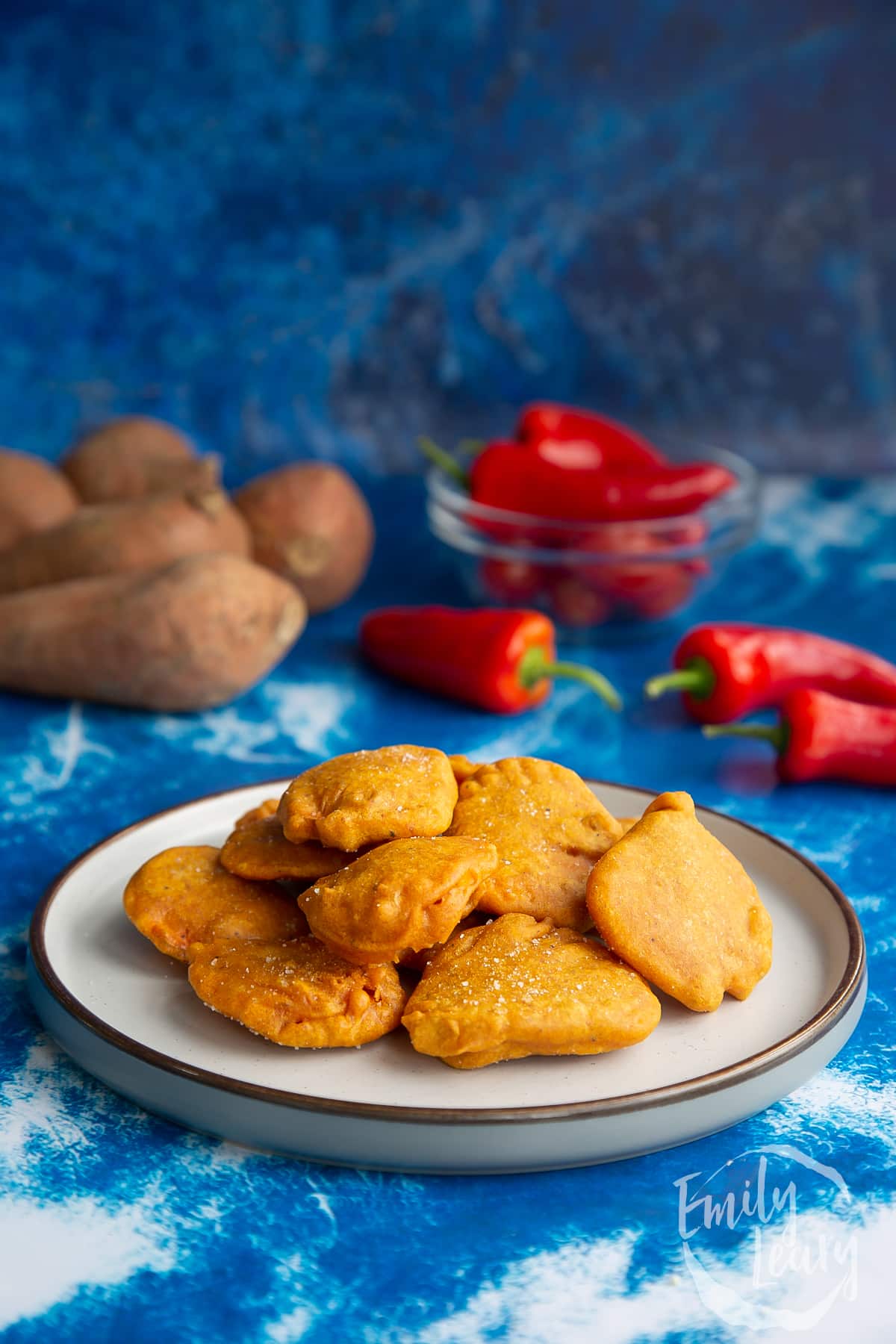
Enjoy!
Print this Sweet Potato Pakoras recipe
Sweet Potato Pakoras Recipe
Ingredients
- 125 g (4.4 oz) chickpea flour
- 25 g (0.9 oz) rice flour
- 1/2 tsp (0.5 tsp) salt
- 1/4 tsp (0.3 tsp) freshly ground black pepper
- 1/2 tsp (0.5 tsp) chili powder
- 1/4 tsp (0.3 tsp) ground coriander
- 1/2 tsp (0.5 tsp) turmeric powder
- 1/2 tsp (0.5 tsp) cumin
- 1/2 red chili finely chopped
- 2 medium sweet potatoes peeled and cut into 1-1.5cm (½ inch) slices
- vegetable oil to fry
Equipment
- Deep fat fryer or suitable high-sided saucepan
Instructions
- Put the chickpea flour, rice flour, salt, coriander, chilli powder, turmeric, cumin and fresh chilli in a large mixing bowl and whisk together.
- Measure 175ml (3/4 US cups) of water a little at a time, whisking until you have a thick, pancake-like batter - you might not need all of the water. Leave to rest for 10 minutes.
- Prepare the oil in your deep fat fryer or a large, high-sided saucepan. It’s no more than one third full to allow for safe expansion during heating and cooking.
- Heat the oil to 180C (355F) or until a little bit of batter dropped into the oil bubbles.
- Put a few pieces of sweet potato into the batter and turn so that they are well coated. Don’t dip all of them at once as you’ll overcrowd the pan. Aim for 4-6 pieces at a time.
- Lower the coated pieces into the oil slowly so that they don’t drop straight to the bottom and stick.
- Fry for 6 minutes until crisp and golden, turning gently as needed.
- Lift from the pan using a slotted spoon or straining spoon and place on a plate lined with kitchen paper to allow the oil to drain.
- If you like, you can place the drained pakora on a baking sheet in a low oven to stay hot and crisp while you fry the rest of the batch.
Video
Notes
Nutrition
Pin this Sweet Potato Pakoras recipe
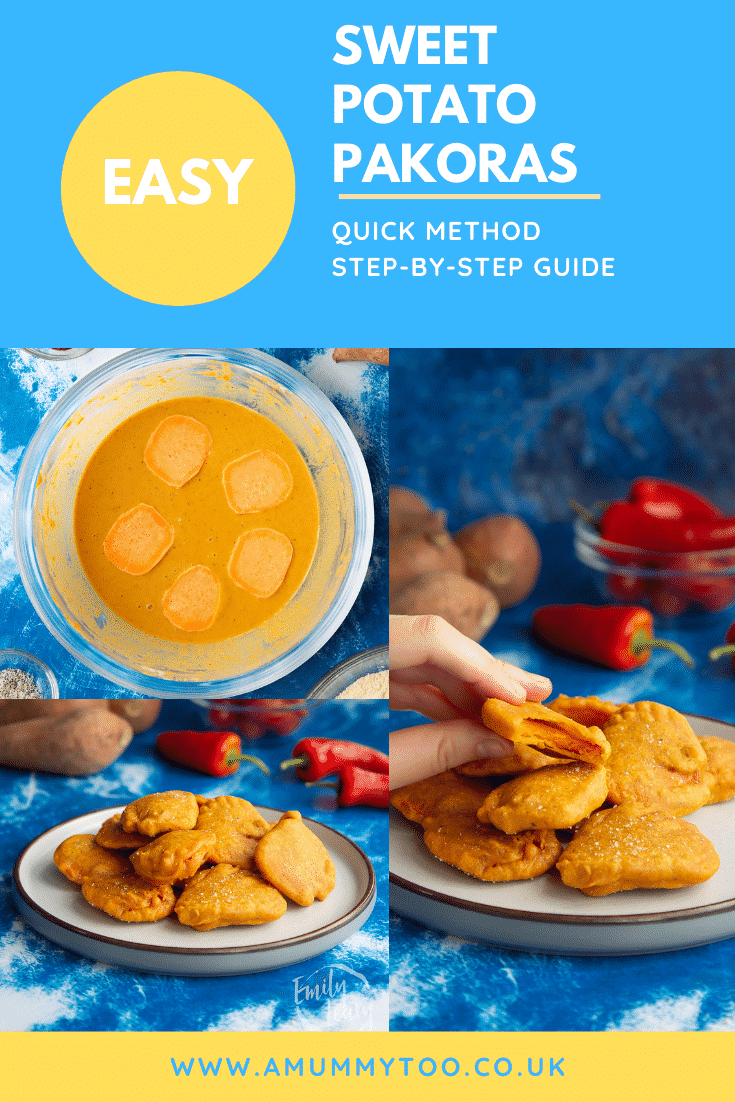

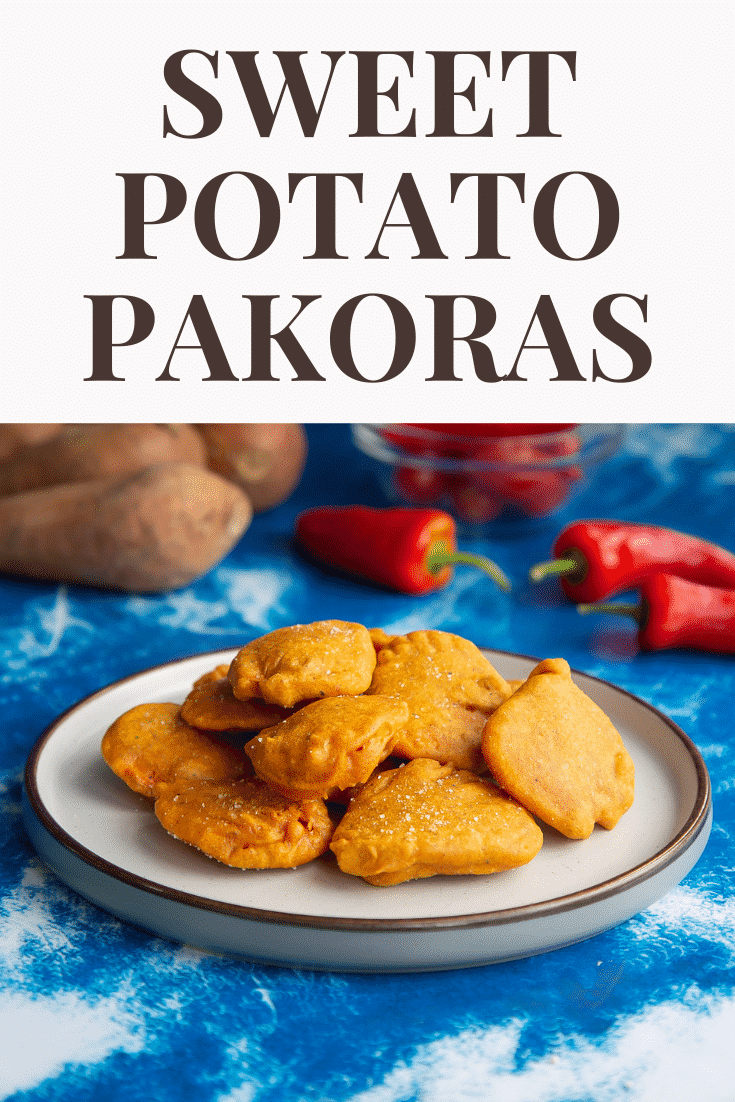



More pakora recipes to try
Have you got my book?

'This is a great kids cookery book. Emily is a star' - Simon Rimmer
'The book I'd like to force into any mother's kitchen' - Prue Leith
"A fab book with a plan." - Jane Devonshire, 2016 Masterchef UK winner
'Emily has managed to combine her mummy knowledge and passion for food to make a truly helpful and brilliant cookbook' - Priya Tew, RD, BSc (Hons), Msc
Get Your Kids to Eat Anything is an achievable 'how to' for parents in the battle to overcome picky eating and 'make new the norm'. Emily Leary's unique 5-phase programme looks at the issue of 'fussy eating' in a holistic way that links imagination with food, and which situates parents alongside - not in opposition to - their children.


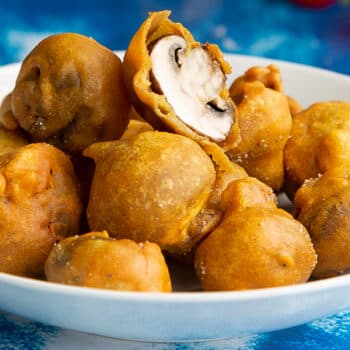
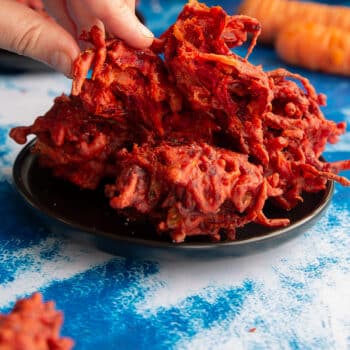
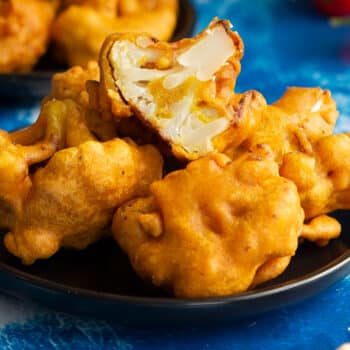
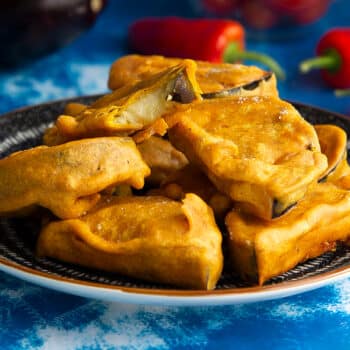
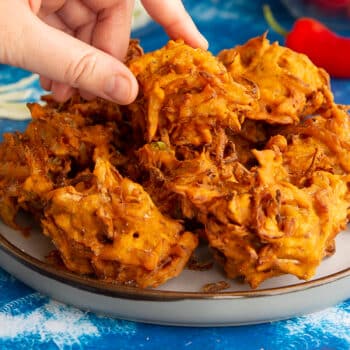
Leave a Reply